The South African flag symbolizes the nation’s transformation and its commitment to a shared future. Emerging at the dawn of democracy post-apartheid, it weaves the country’s varied heritage into a cohesive tapestry, signifying hope and collective progress.
Flag of South Africa
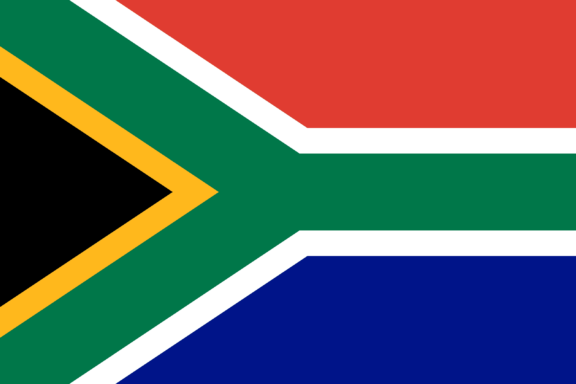
The South African flag is characterized by its distinctive Y-shaped design, which seamlessly merges into a horizontal display, creating a visual representation of the nation’s unity and the coming together of diverse elements into a single national identity.
This emblem stands out for its innovative layout and is globally recognized as a symbol of reconciliation, reflecting South Africa’s journey from division to a harmonious future.
Flag of South Africa: Color Palette
South Africa Flag Map
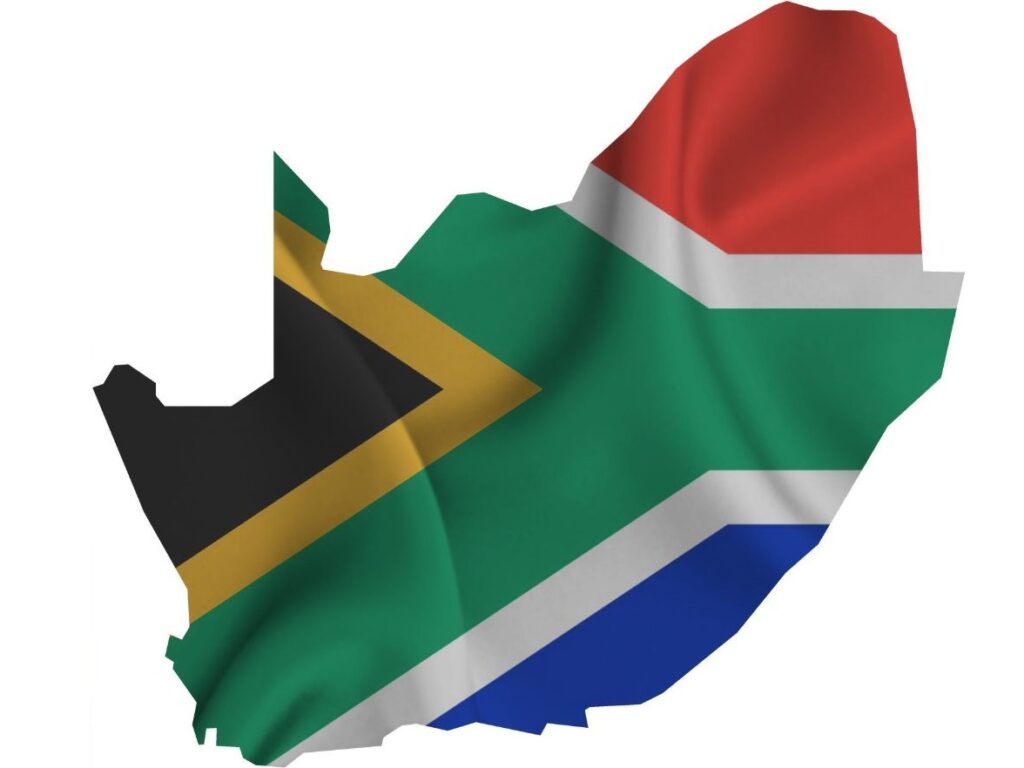
South African Flag Emoji: 🇿🇦
Meaning of Each Color
Each color narrates a tale of endurance, concord, and hope, deeply rooted in the nation’s geographical and cultural landscape, inviting a closer look into their profound meanings in the sections ahead.
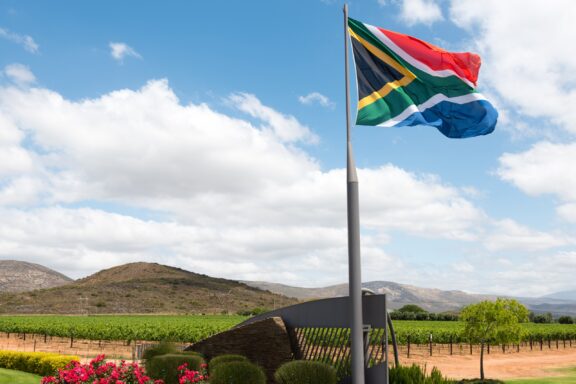
Black
Traditionally, black is associated with the people of South Africa, and more specifically, it represents the black majority of the country. It’s a powerful symbol of the nation’s demographic landscape and the pivotal role of the black population in the country’s history.
Green
Green is often seen as a symbol of land, fertility, and agriculture, reflecting South Africa’s rich natural resources and the importance of the land to the country’s identity and economy. It also represents hope and the natural beauty of the nation.
Yellow (Gold)
Gold represents the mineral wealth of South Africa, one of the world’s largest gold producers. This color underscores the significance of mining and natural resources in the country’s history and economic development.
Red
Red can symbolize the bloodshed and sacrifices made during the struggle against apartheid and the country’s fight for freedom. It’s a reminder of the resilience and courage of the South African people.
Blue
Blue represents the sky and the endless horizons of the South African landscape, symbolizing the freedom and opportunities available to all South Africans. It also reflects the country’s aspiration for a better future.
White
White is often regarded as a symbol of harmony and concord. In the context of the South African flag, it represents the commitment of the nation to forge a peaceful future and the reconciliation of its diverse people.
South African Coat of Arms
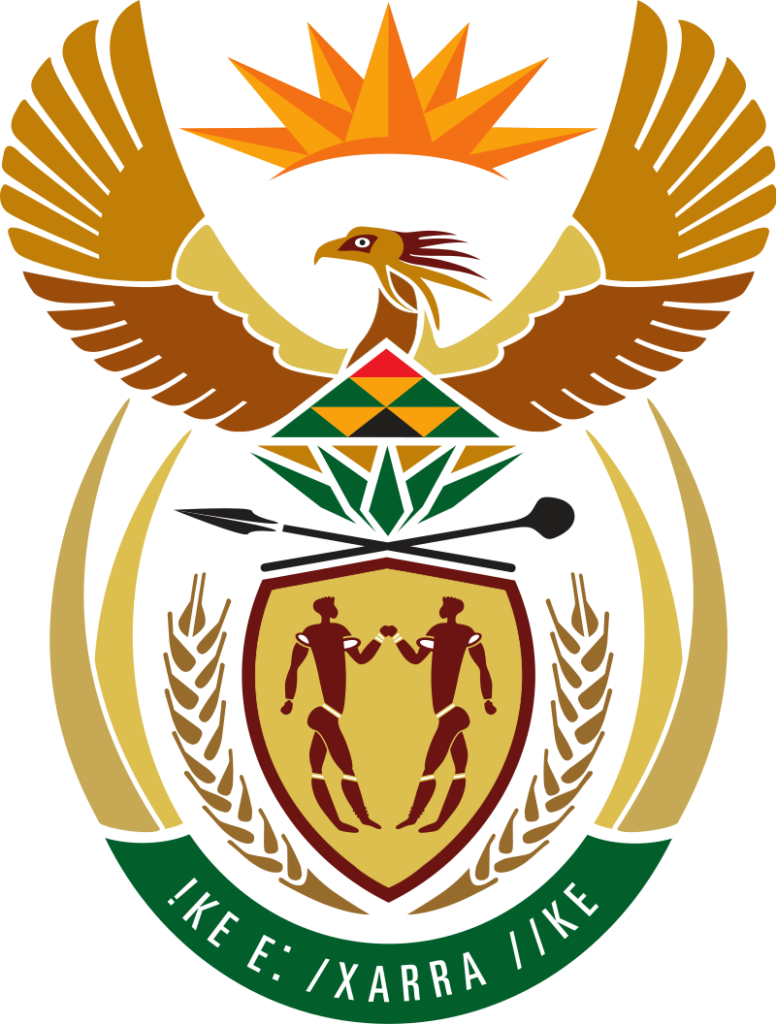
The Coat of Arms of South Africa is a separate symbol from the flag and represents the state’s highest authority. Adopted on 27 April 2000, it replaced the earlier coat of arms that had been in use since 1910.
- Motto: The motto at the base of the Coat of Arms is “ǃke e꞉ ǀxarra ǁke,” written in the Khoisan language of the /Xam, people, and translates to “Diverse People Unite.”
- Two Khoisan Figures: The human figures in the Coat of Arms are derived from Khoisan rock art, representing the original inhabitants of South Africa and acknowledging their contribution to the country’s heritage.
- Secretary Bird: The secretary bird stands at the top of the Coat of Arms, with its wings uplifted in majesty and grace. It symbolizes protection and vigilance.
- Rising Sun: The rising sun at the horizon symbolizes the promise of rebirth, the warmth of the sun, and the light and enlightenment that the country strives for.
- Protea: The protea, South Africa’s national flower, is featured prominently and symbolizes the beauty of the land and the flowering of potential that the nation holds.
- Wheat: The ears of wheat are symbols of fertility and growth, representing the agricultural heritage of South Africa and its promise of sustenance and prosperity.
- Elephant Tusks: The elephant tusks frame the shield and symbolize wisdom, strength, moderation, and eternity.
- Shield: The shield at the center of the Coat of Arms contains elements from the country’s flag and symbolizes protection and resilience.
- Spear and Knobkierie: Positioning these traditional weapons in a restful state symbolizes a commitment to maintaining peace and safeguarding harmony rather than promoting conflict.
The Coat of Arms is a complex representation of South Africa’s identity, incorporating elements that celebrate the country’s prosperous past.
Historical Evolution and the Meaning Behind Changes
The evolution of South Africa’s flag reflects its tumultuous history and path towards democracy, just as the country’s three capitals – Pretoria, Bloemfontein, and Cape Town.
Before the current flag, South Africa used several different flags that symbolized its colonial and apartheid past.
The flag used from 1928 until the end of apartheid in 1994 was predominantly based on the Dutch Tricolor and included elements from the British Union Jack, reflecting South Africa’s colonial history.
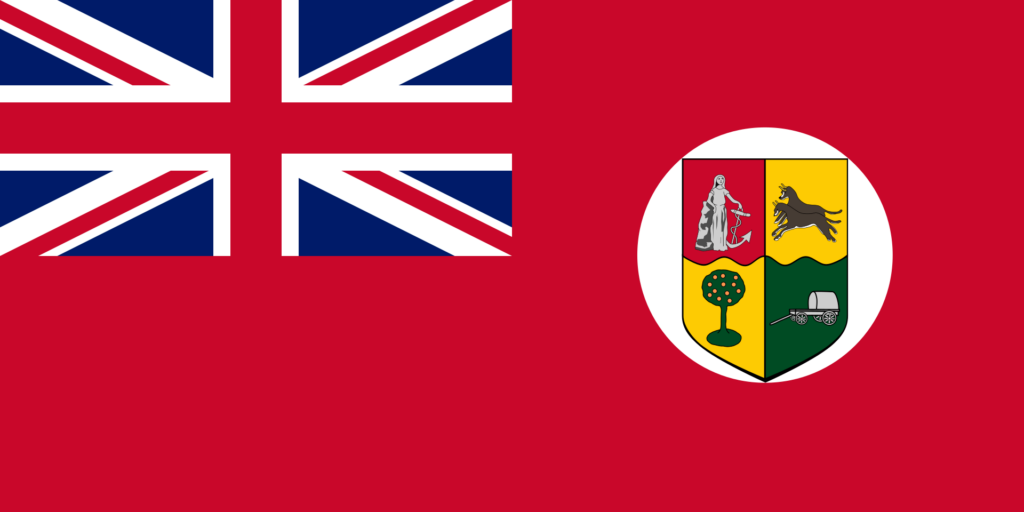
With the end of apartheid and the beginning of a new democratic era, there was a need for a new national symbol that would represent all South Africans.
The current flag was designed in March 1994 by Frederick Brownell and was first used on 27 April 1994, the day of the general election. This flag was initially intended as an interim flag only; however, it became so popular that it was adopted permanently.
Adopting the new flag symbolized South Africa’s transformation, moving away from a past marred by segregation and strife towards an era embracing togetherness, cultural plurality, and democratic values.
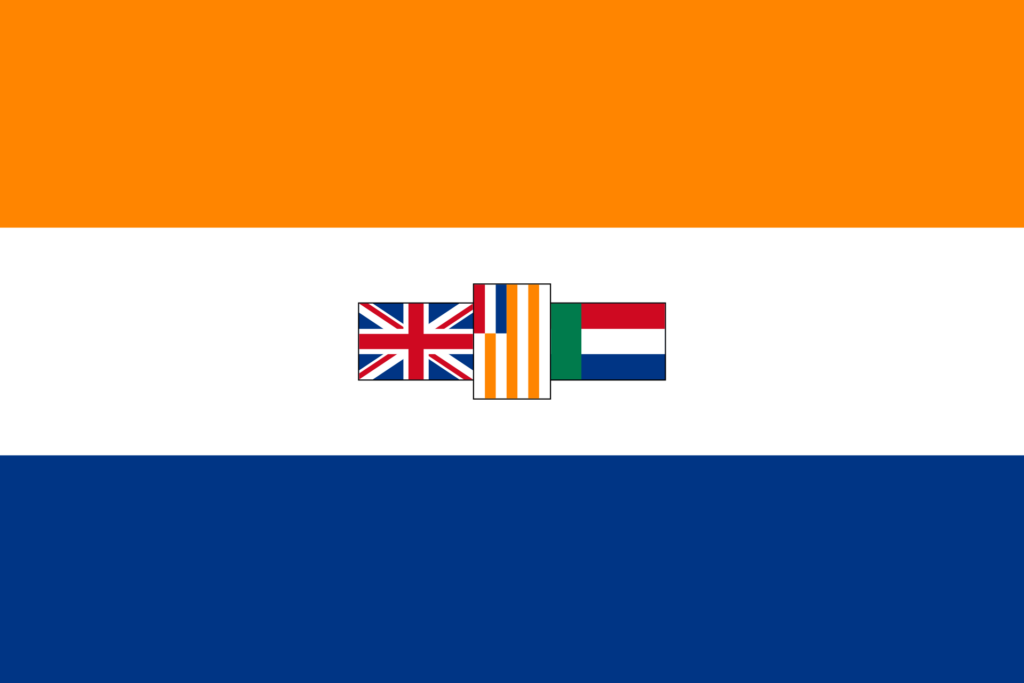
The current flag is celebrated as a symbol of reconciliation and is a testament to the nation’s commitment to come together and build a new, inclusive society.
Overall Symbolic Meaning of the Flag
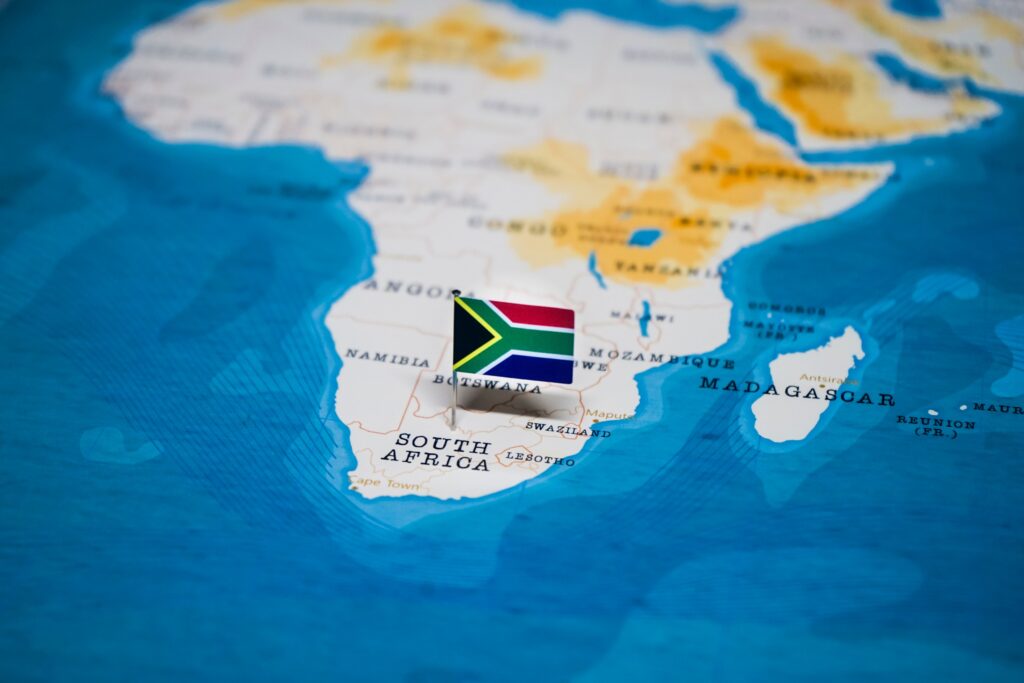
The South African flag stands as a testament to the nation’s journey towards inclusivity and shared values, weaving the essence of its diverse heritage into a cohesive narrative.
It signifies the collective endeavor towards a harmonious society, underlining the transformation from a history of segregation to a future focused on mutual respect and collaboration.
Similar Flags to the Flag of South Africa
The South African flag shares thematic similarities with other national flags, reflecting common historical experiences or symbolic aspirations. Here are three examples:
Kenya
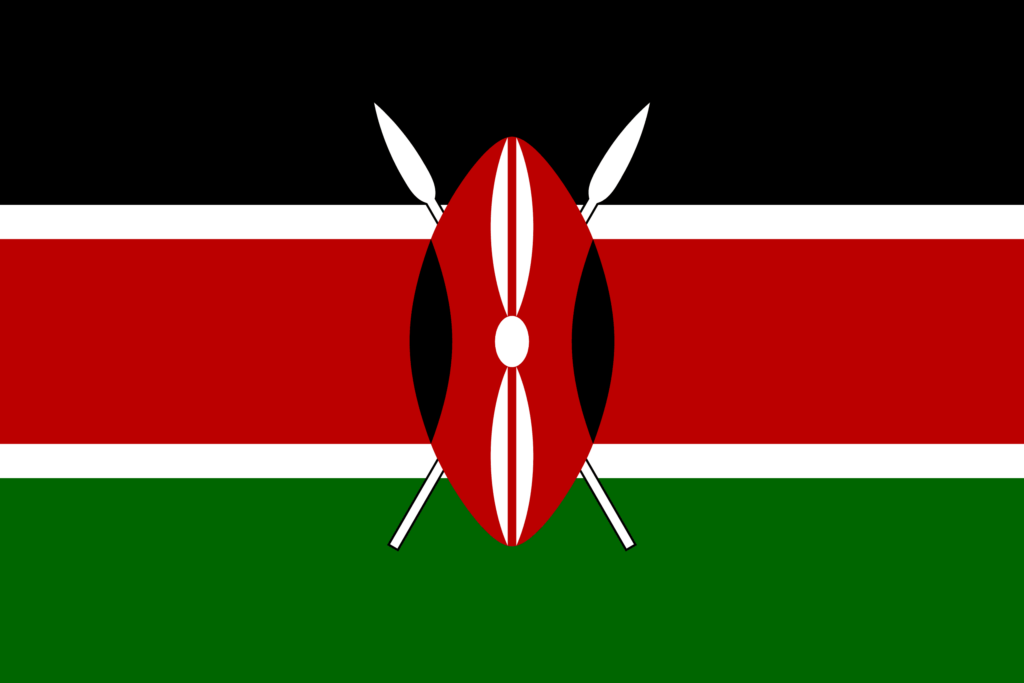
Including green in the Kenyan and South African flags symbolizes the countries’ connection to their land and environmental wealth, underscoring the importance of natural resources in their national identities.
Additionally, the use of red in Kenya’s flag, much like in South Africa’s, conveys the sacrifices made to pursue freedom, reflecting a shared history of resilience against oppression.
Guyana
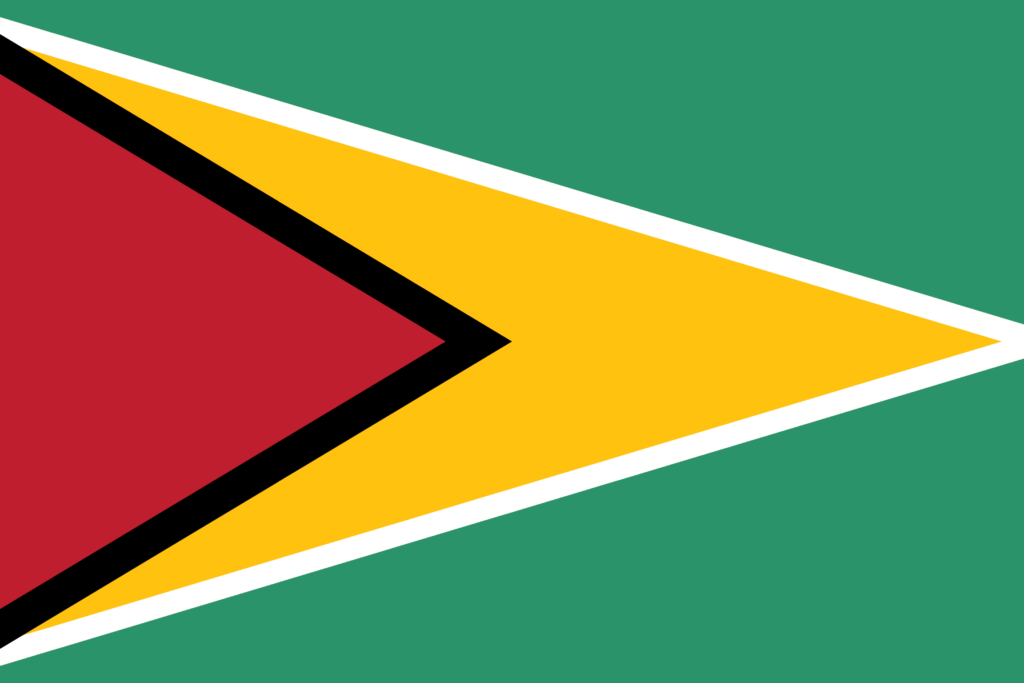
The symbolic use of yellow in both flags highlights the mineral riches of South Africa and Guyana, pointing to the significance of these resources in their development and global identity.
Moreover, the green element in both flags emphasizes their agricultural potential and the lushness of their landscapes, reinforcing the theme of growth and prosperity.
Vanuatu
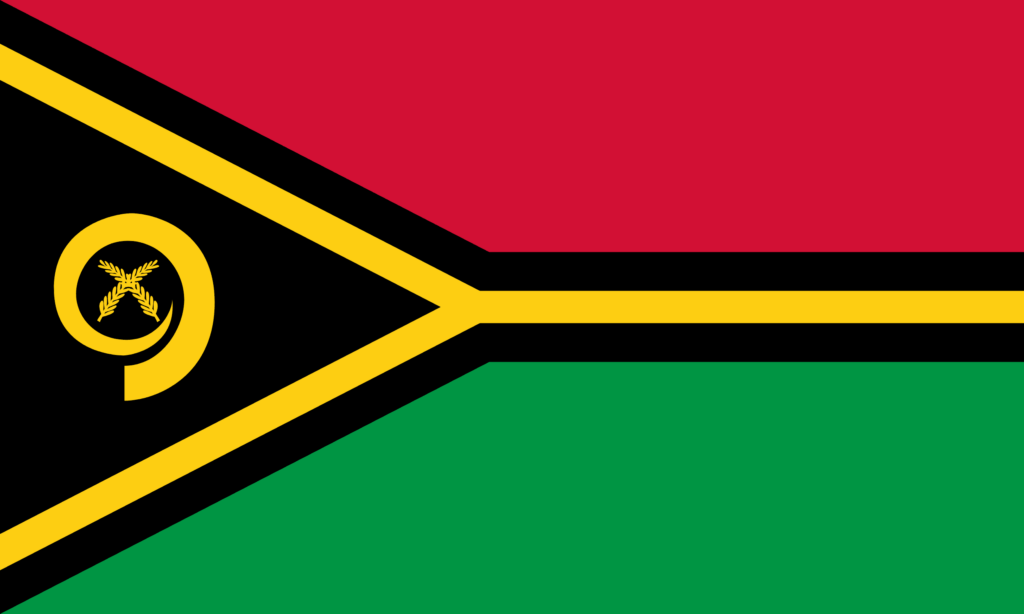
The Vanuatu flag shares similarities with South Africa’s due to both nations’ lush natural beauty and their historical division by colonial powers, with South Africa divided between British and Dutch influences and Vanuatu by British and French.
This shared history of colonial division and the quest for unity is subtly reflected in their flags.
Final Thoughts
The South African flag is a vibrant emblem that resonates with its people and reflects the nation’s unique position among global symbols. Its colors and design encapsulate a narrative of reconciliation and hope, holding profound significance for its citizens as a beacon of their shared journey toward a more inclusive future.
Image Sources and Copyright Information
- South African Flag Against Landscape Background: © Frank Gaertner/Shutterstock
- South Africa Flag Pin on Map: © hyotographics/Shutterstock